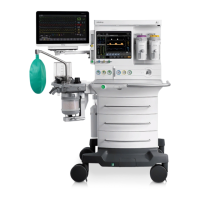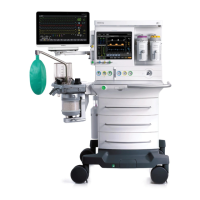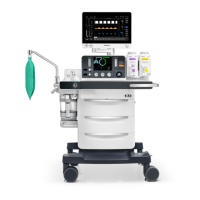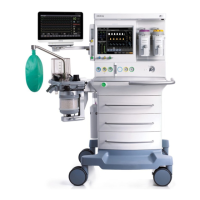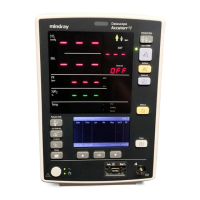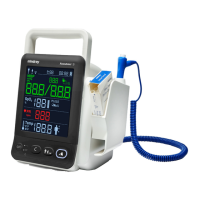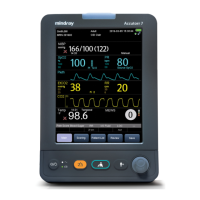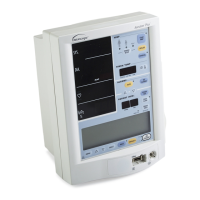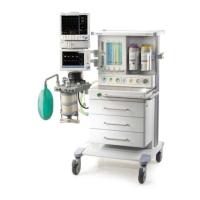6-9
Failure
Description
Possible Cause Recommended Action
2. Check whether the gas supply is sufficient for
the whole calibration process. (T
gas pressure is not less than 345 kPa (50 psi).)
3. Check whether the calibration dev
properly.
Display 4
A zero point error occurs in
the expiratory flow sensor.
1. Check whether the fresh gas is turned off.
2.
Check whether the inspiratory valve can be
closed tightly. According to the valve
diagnosis tool, after the valve is closed, if the
gas supply is disconnected and then
connected, the AD values of the ventilator
flow sensor basically remain unchanged (the
reading change does not exceed 1%),
indicating that the valve is closed tightly. If
the valve cannot be closed tightly, replace the
drive gas assembly.
3. Check whether the zero point of the sensor is
red. If yes, calibrate the sensor again.
4. Replace the VCM.
Display 5
The expiratory flow sensor
is nonlinear.
1. Check whether the check valve is connected
correctly.
2. Check whether the sampling line is connected
correctly.
3. Replace the expiratory flow sensor.
4. Replace the VCM.
Display 6
The resolution of the
expiratory flow sensor is
incorrect.
1. Check the connection of the sampling line and
the gas tightness.
2. Check whether the gas supply pressure ranges
from 280 kPa (40 psi) to 600 kPa (87 psi).
3. Check the settings of the calibration device.
4. Replace the relevant flow sensor in the circuit.
5. Replace the VCM.
Display 7
The measurement range of
the expiratory flow sensor
is abnormal.
1. Check whether the sampling line is connected
correctly.
2. Start the valve diagnosis tool in the calibrated
pneumatic connection environment, set PEEP
Valve Current
expiratory valve based on 500 mA, gradually
increase the current of the inspiratory valve
(Insp Valve Current
), and observe the
measured value of the calibration device under

